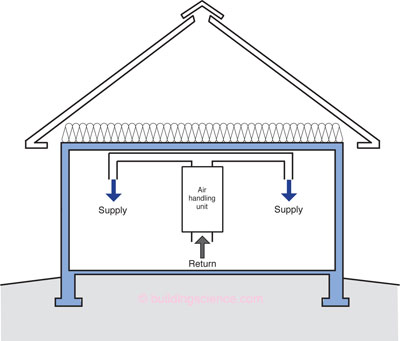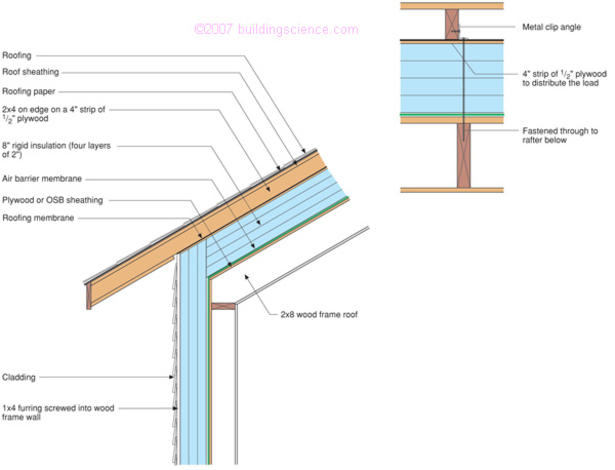Un vented roofs operate on the principle that moisture entering the roof assembly can be controlled and that there is no need for venting to control moisture accumulation.
Non vented attic system.
However if moisture is able to enter the unvented attic space it may lead to roofing panel issues.
In reality if spray foam insulation is used on the roof deck it could raise the temperature of the shingles a few degrees but not enough to cause any damage.
Unvented attic assemblies spaces between the ceiling joists of the top story of the roof rafters shall be permitted if all of the following conditions are met.
The unvented attic space is completely contained within the building thermal envelope.
Control construction moisture content with tenting or temporary roofing when necessary.
The attic space becomes indirectly conditioned as a result of the air leakage heat transfer and vapor diffusion through the ceiling.
Unventilated attics can help to mitigate energy loss through leaky ducts or ceiling fittings.
It is a common misconception that one of the unvented attic problems is that the roof needs to breathe or that the insulation will make the roof hot.
A fundamental requirement of an unvented attic assembly is the use of air impermeable insulation on the underside of the unvented roof to prevent air infiltration and exclude airborne moisture from the attic.









